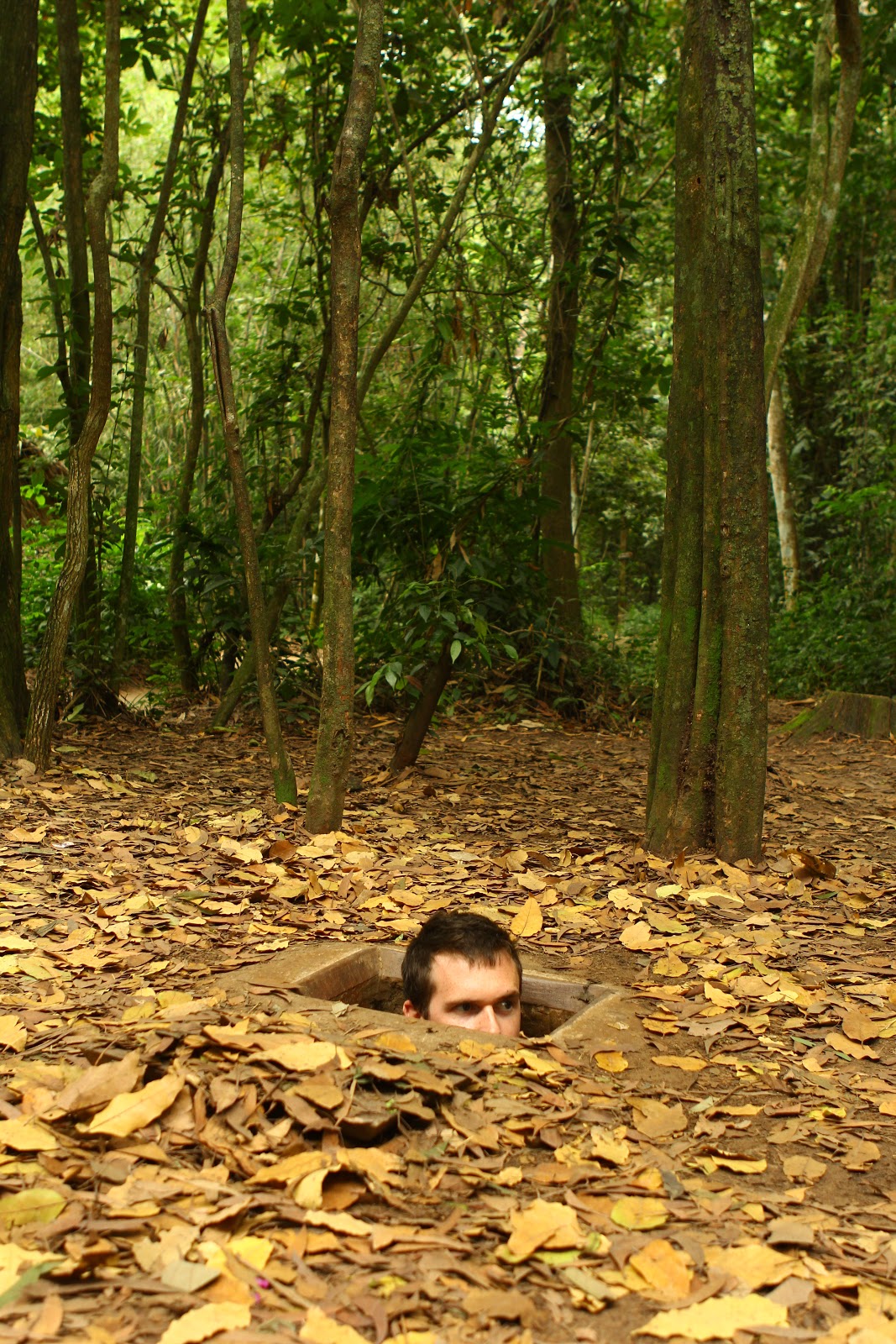From Otres we were collected for our journey out to Koh Ta Kiev island, where the Crusoe Island Camp Ground is located. Unfortunately, as everything is just getting off the ground there, we didn't have shade for the boat trip, and everyone got a little pink under the blazing sun.
On arrival, we were led to our private bungalow along a jungle path, crossing a freshwater creek, and feeling like Robinson as he returned home.
The bungalow was a treat for us - a departure from our normal budget traveling, and we made full use of it during the next 24 hours. The shade and mosquito net were our refuge, and after swimming or walking on the beach we would return and read. I loved the bush carpentry with which it was put together, and the rough-sawn boards and round poles gave it a rustic but comfortable feel.
Dani spent as much time as possible in the numerous hammocks scattered around, but one in particular was her preferred choice. It hung from a tree on the beach and the waves often flowed right underneath, sending the crabs scurrying away.
The bar was the source of entertainment at night, where the friendly hostesses served cold beers and we chatted with other travellers about places to go and places to avoid.
Our second night on the island we said goodbye to our bungalow and switched to a tent. The heavy rain and lightning we experienced the night previous had made us wary, so we chose to stay on a platform with a thatched roof. It was a happy medium between luxury and extreme budget.
For me at least, relaxation sometimes turned into boredom, as I felt more like doing something productive than just lazing about. We decided to go for a cross-island trek one afternoon, and were led by an intrepid Dutchman on the small and winding paths.
We visited a hut on the other side of the island, where a family was living very traditionally. They were surrounded by coconut trees and a mango plantation. We asked if we could have a couple coconuts and the young girl fearlessly shinned up a colossal palm, a rope wrapped around her waist that would do nothing to slow a fall. It became apparent that she had the rope so she could haul up a big knife and cut the coconuts free.
The awestruck boys of the family were clearly impressed, as were Dani and I. The oldest boy took over the knife to shape the coconuts and pierce the top for consumption.
Returning to the camp we spent our final evening in our thatched tipi, having moved yet again, and went swimming in the perfect water.























































